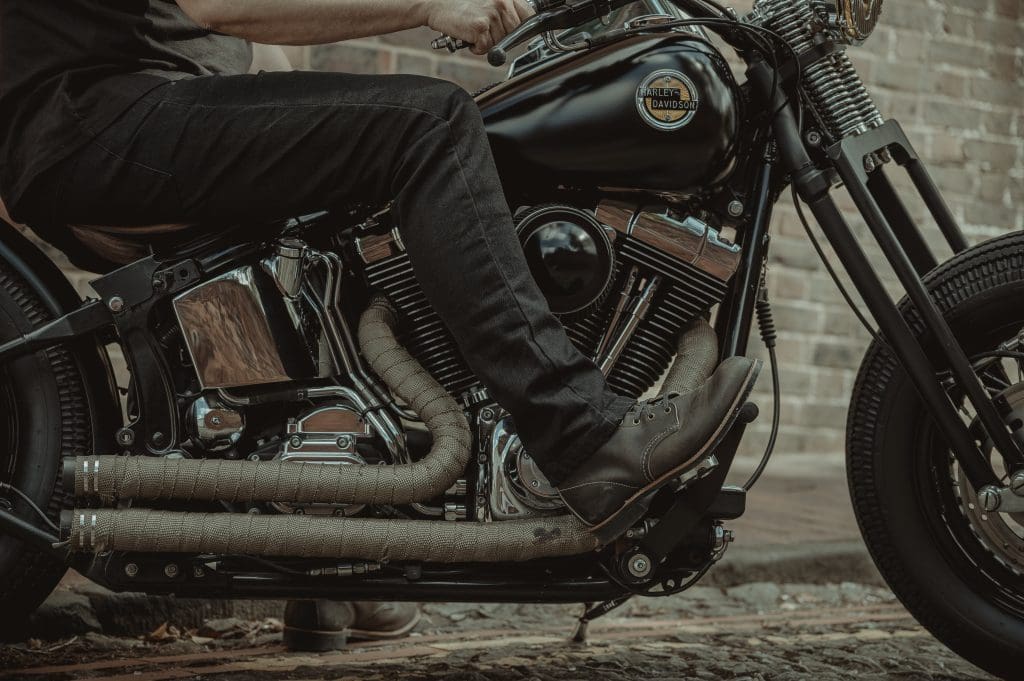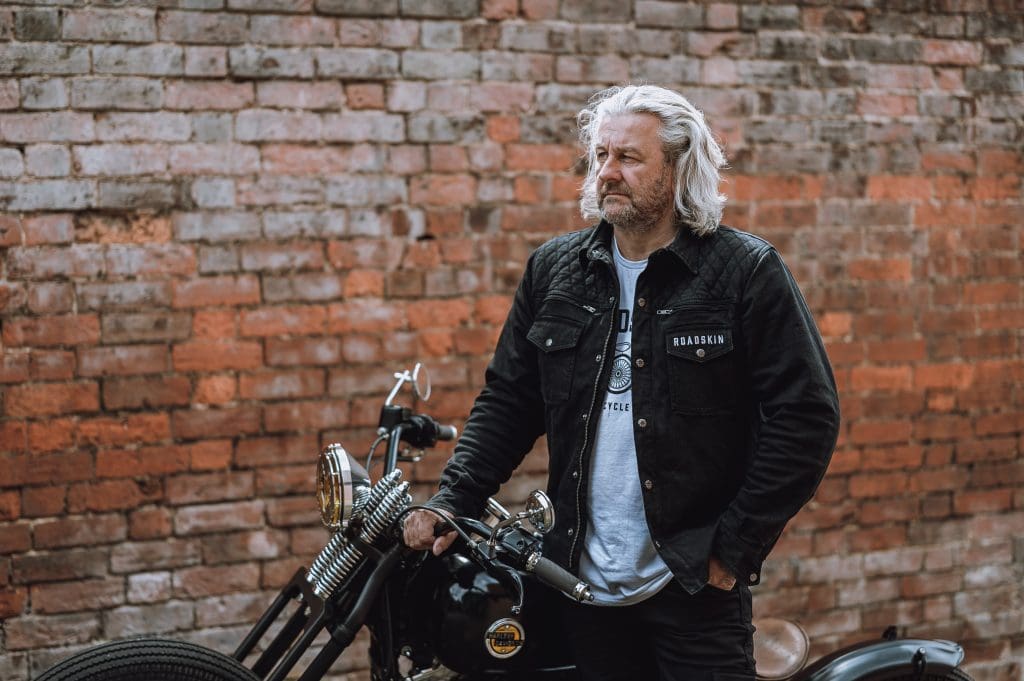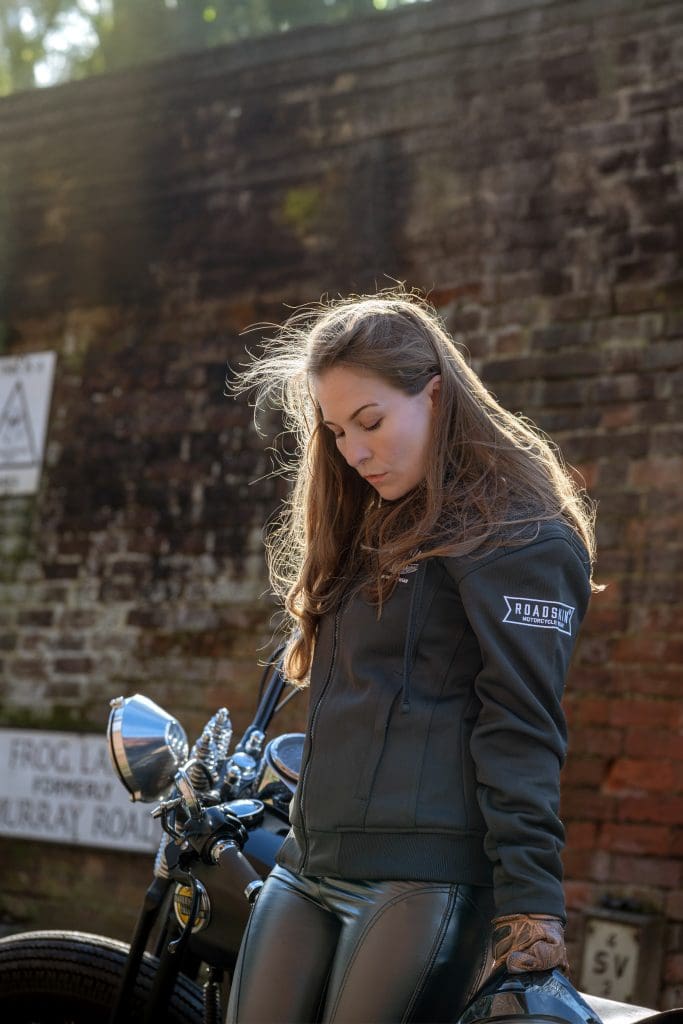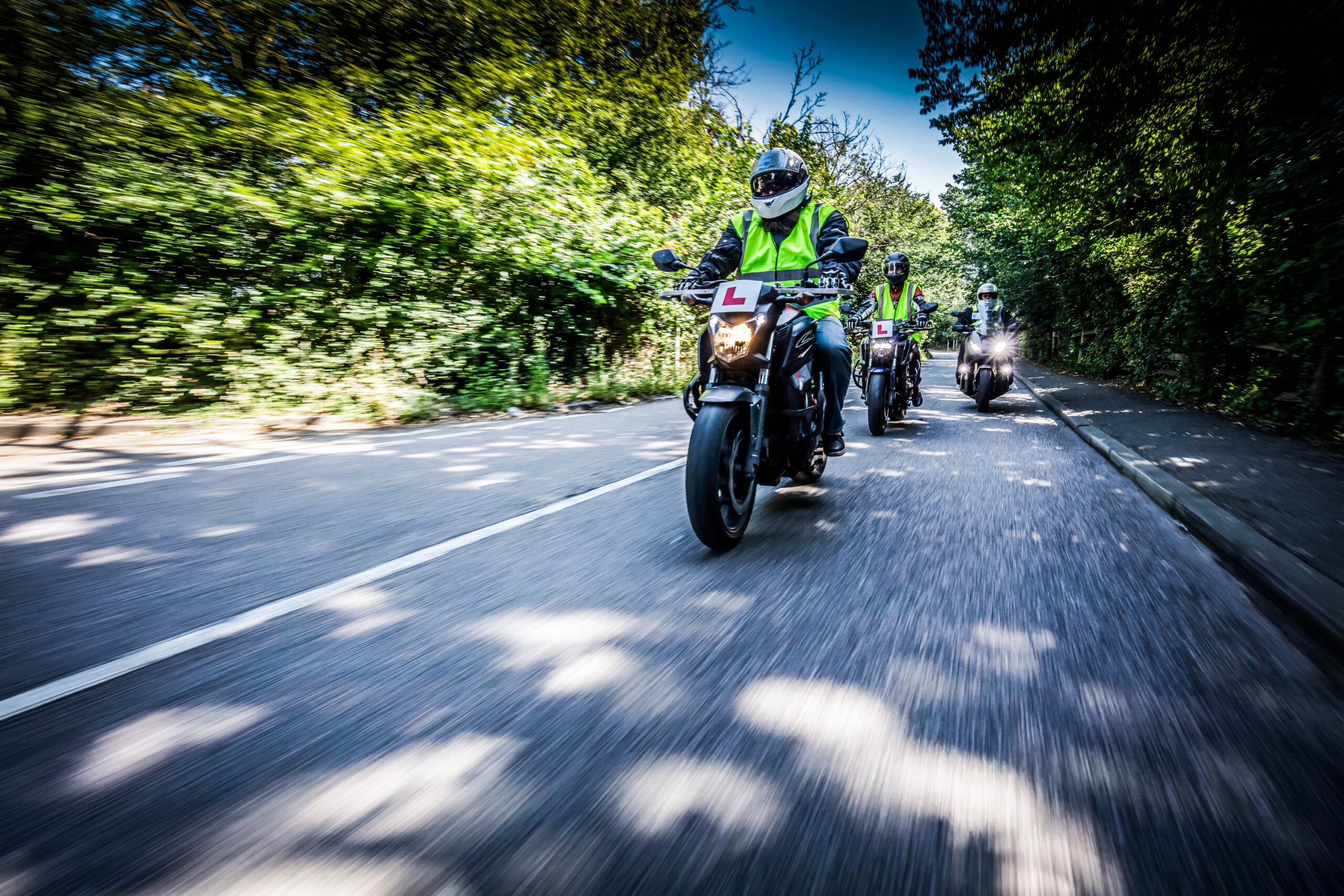When the sun shines and we get our five-minute summer, it’s tempting to ride without full protection. But that’s a mistake you don’t want to make. Motorcycle gear for hot weather will keep you cool and safe. And it’s important for you to don your full kit no matter what the temperatures are doing. Because your skin and life are worth it.
We cover the essential items of protective clothing you should wear when riding in our Compulsory Basic Training classes and again in our full licence training courses. We 100% believe all riders should wear full safety gear year round.
Riding with the right motorcycle gear shouldn’t be out of reach for anyone’s budget. And it needs to fit the season too. Wet weather gear in winter is essential. Motorcycle gear for hot weather lets you stay cool and safe on the road. That’s why we’ve teamed up with some leading motorcycle clothing brands to bring discounted motorcycle safety gear to our students. This blog walks you through some of the best selling items Roadskin Motorcycle Wear have.
Roadskin Motorcycle Wear – a partnership supporting rider safety
Roadskin is a UK company, family owned and run from Royal Tunbridge Wells, Kent. Ian and Nicky, Roadskin Motorcycle Wear’s founders, are keen riders on and off-road. Their combined years of motorcycling experience and knowledge provide the inspiration for the comfortable and sturdy designs they create.
Their cool biker clothing looks great and works hard at protecting riders on the road. They know that looks aren’t nearly enough when you’re on the road, so each item they sell is CE approved. This CE approved range includes motorcycle gear for women, hot weather gear, waterproofs and winter gear. As well as inspired accessories that keep your valuables safe and easy to access when riding.
The high quality of their clothing reaches the strict standards for CE approval so we have no qualms partnering with Roadskin. We’re happy to encourage others to shop for their gear too because we’ve tried and tested it ourselves. Many of the Phoenix Motorcycle Training Team choose Roadskin for their work clothes. It’s comfortable, durable and most important of all, it’ll protect them if the worst were to happen.
So what kind of gear will you find in the Roadskin Motorcycle Wear online store? Let’s take a look at their top-selling items.
Men’s motorcycle gear for on and off road
You could choose dedicated motorcycle safety gear to wear while you ride and change into casual or work clothes when you reach your destination. Or you can choose Roadskin’s streetwear designs that look and feel great on or off your bike while protecting you just as well as dedicated gear. Most of us at Phoenix choose the latter. Roadskins top-selling items are a great place to look for your motorcycle gear this summer.
Taranis Elite AAA rated motorcycle jeans
Designed for both safety and style, Roadskin’s Taranis Elite motorcycle jeans are AAA-rated. That rating covers the entire garment, not just the material so you’re getting top-tier protection. The single-layer black denim construction has a super-light mesh lining for ventilation and added skin protection in a slide. These motorcycle jeans come with Level 2 knee and hip armour in adjustable pockets and triple-stitched main seams. The CE-approved jeans combine robust safety with a comfortable, straight-leg fit and stretch that goes over most boots. They’re perfect for any destination.

“Very comfortable jeans – fine for casual wear off the bike and perfect for warmer weather riding. The AAA rating is remarkable for single skin jeans. And as always with Roadskin the workmanship is first-rate.” – Jon Barton
Easyrider II AA rated armoured hoodie
The Maximite Easyrider II Armoured Motorcycle Hoodie is a comfortable year-round choice for riders. It’s CE AA-rated, tough and lightweight, featuring Level 2 back, shoulder, and elbow armour for superior impact protection. It boasts a waterproof membrane and cool mesh lining for versatility in all weather except the coldest days of winter. New features include protective shoulder ribbing and storm cuffs to enhance safety and comfort. Designed with two internal zipped pockets and a detachable hood, it’s perfect for everyday casual riding.
I’ve been riding in the Roadskin Easyrider II Hoodie for several weeks now, covering over 400 miles in various conditions, and I can confidently say it’s one of the best pieces of motorcycle gear I’ve owned. This hoodie is a game-changer for riders who want to look casual without compromising on protection or comfort. – Gordon Petty
Munro AA armoured shirt
Roadskin’s Munro Armoured Motorcycle Shirt combines style with safety. The CE AA-rated motorcycle shirt comes with CE Level 2 back, shoulder, and elbow armour for robust yet comfortable rider protection. Crafted from a durable blend of cotton and Spandex with a Kevlar/polyester inner lining and double-stitched main seams, it’s built to last. Designed for all temperatures, the front and rear zipped vents enable enhanced airflow and the light mesh lining, and quilted shoulder yokes deliver added comfort. Thoughtful details like storm cuffs, secure pockets and a securable belt loop means this shirt doesn’t just look good, it’ll make every ride safer and more comfortable.

Excellent item – think of it more as being a jacket styled as a heavy-duty shirt (which I mean as a compliment). Worn as a tucked-in shirt, it’s best without the back protector for comfort & ‘useability’; worn as a loose shirt/jacket the back protector makes total sense. Well made, so I expect it to be durable. Oh yes, and it looks great too. I’m impressed. Recommended. – Alan D
Best selling motorcycle gear for women
For years, female motorcyclists were stuck with wearing smaller sized men’s motorcycle gear. Thank god those days are long gone! Roadskins offer some fantastic motorcycle gear for women that looks great on and off road. These are their three top-selling motorcycle items for hot weather and biker women.
AA rated Bronte Leggings
The AA-rated Bronte motorcycle leggings have exceptional abrasion resistance thanks to the full DuPont™ Kevlar® lining. They also come with CE Level 2 knee and hip protectors for added protection. Designed with both street style and comfort in mind, adjustable knee armor pockets, an elasticated foot stirrup to prevent riding up, a high rear waistband for comfort, and a connecting zip for jackets make these leggings stylish and functional for women bikers.

Only just had the chance to wear these leggings after having them for a month. My god they are so comfortable & look great! I’m usually a size 14-16 on the bottom and only 5ft2” after reading some reviews I ordered the 16 regular and they fit perfectly with enough room for getting on and off the bike. I would highly recommend these leggings. Well worth the money for the safety and comfort. – Katie
Easyrider II AA rated ladies armoured hoodie
This CE AA-certified Armoured Motorcycle Hoodie for ladies gives comfortable style and exceptional protection for year-round riding. You’ll get CE Level 2 back, shoulder, and elbow armor inserted and an integrated waterproof membrane for wet weather riding. The breathable mesh liner makes it perfect motorcycle gear for hot weather too. The protective shoulder ribbing and internally lined storm cuffs to prevent sleeve displacement in an accident enhance comfort and protection. It’s a versatile hoodie with internal zipped pockets, a removable hood, and a rear zip connector for pairing with compatible riding trousers like Roadskin’s ladies leggings.

Brilliant buy! I’m completely new to riding a bike, the staff was really helpful and found the perfect jacket. The jacket is breathable and fits like a treat! Thank you Roadskin I’ll be returning to buy some more clothing – Jem
AA rated Freya leggings
These AA-rated Freya leather-look motorcycle leggings are as comfortable as your favourite leggings but with superior protection. That’s thanks to the DuPont™ Kevlar® and Coolmax® lining. This lining gives excellent abrasion resistance, moisture-wicking properties, and breathability in a style you can wear anywhere. The Rheon™ CE Level 2 knee and hip armor inserts ensure you’re safe on the road without compromising on style or comfort. The stretchy, high-rise design, elasticated waistband and internal drawstring gives you a flattering, sculpted fit.
Love the Freya trousers!! These are sooo lovely to wear, feel nice, look fantastic and AA rated too! I have lots of comments from people when wearing them saying how good they look and they are so surprised when I say they are AA rated. – BikerKaz
What do the safety levels for CE certification mean and do you need the highest protection for motorcycle gear?
You need to know what the safety levels are for CE certified clothing to choose adequate protection for British roads. When it comes to motorcycle clothing, the CE certification (Conformité Européenne) is key, specifically under the EN 17092 standard. This standard classifies garments based on their protective capabilities, using a simple letter system which makes it easier to understand.
- Class A: Offers a good basic level of protection, often found in more casual riding wear. This gear provides a balance of abrasion resistance and comfort, suitable for urban riding or shorter journeys.
- Class AA: Provides a strong balance of protection and comfort, making it ideal for general road use, touring, and longer rides. This class offers significantly better abrasion and tear resistance than Class A.
- Class AAA: Represents the highest level of protection available for motorcycle clothing. Often seen in race suits, this gear provides superior abrasion and impact resistance, designed for high-speed riding and track use.
Beyond the clothing itself, individual impact protectors (like shoulder, elbow, knee, and back armour) will also have CE ratings (if they’ve been tested). These protectors are rated separately:
- Level 1: Offers a good level of impact absorption.
- Level 2: Provides superior impact absorption and reduces the force transmitted to your body more effectively than Level 1 protectors.
You don’t necessarily need AAA-rated gear for your daily commute. Opting for AA-rated garments and making sure your armour is at least Level 1 is generally enough. It’s a great idea to upgrade to Level 2 armour where possible to give your clothing a safety boost without making your gear overly cumbersome.
How to get the best fit when buying motorcycle safety gear online
Well-fitting motorcycle safety gear is vital for ensuring the protective ratings work when you need them to. If your gear is too loose, armour can shift during movement or an impact. That leaves your critical areas vulnerable. Conversely, gear that’s too tight restricts movement, causing discomfort and potentially hindering bike control and concentration.
Proper fitting gear means your protection stays exactly where it’s needed. That keeps you safe, comfortable and improves your focus and reaction time.
When buying motorcycle clothing online, accurate measurements are your best friend. Always consult the specific brand’s size chart. Sizing varies between brands and countries. You’ll find the Roadskin’s sizing charts with each of the items or handy hints for measuring up for the best fit and match to particular items.
Measure your chest, waist, hips, and inseam carefully using a flexible tape measure, preferably over light clothing you’d wear under your gear. Compare these measurements to the brand’s chart and, if in doubt, check online reviews for comments on sizing or contact the retailer for advice. Remember, it’s often better for new gear to feel snug initially, as most materials will “break in”, stretch, and adapt to your body shape over time.


